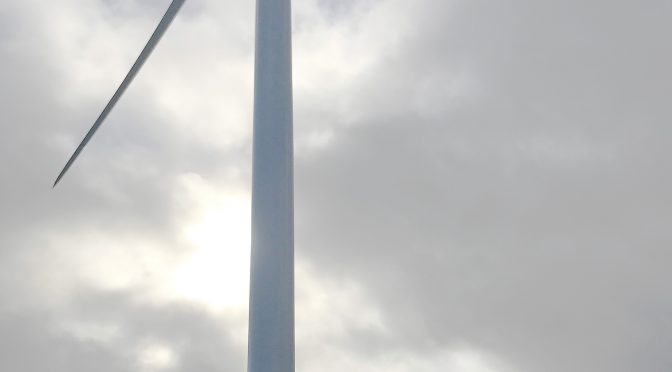This wind energy facility, located in the municipality of Vila de Cruces, will have an installed power of 22.5 megawatts (MW) and its development will involve an investment of about 20 million euros.
The five wind turbines of this fourth Capital Energy wind farm in Galicia will be capable of supplying clean energy to more than 27,000 homes and will avoid the emission into the atmosphere of more than 26,300 tons of CO2 per year. The construction of the Cunca wind farm will lead to the creation of up to 130 jobs and will have an annual economic impact on regional and local coffers, as well as through leasing contracts, of about 154,000 euros.
Capital Energy, a Spanish energy company born in 2002 and whose vocation is to become the first 100% vertically integrated renewable operator on the Iberian Peninsula, continues to take steps to strengthen the development of its clean energy project in Galicia.
The Xunta’s Ministry of Economy has announced that it is submitting to public information the request for authorization [1] of its fourth Galician wind farm: Cunca. Located in the province of Pontevedra, it will have an installed capacity of 22.5 megawatts (MW) and will involve an investment of around 20 million euros.
The five wind turbines of this Capital Energy renewable facility will be capable of supplying about 66,000 megawatt hours (MWh) of clean energy per year, equivalent to the consumption of more than 27,000 Galician homes, and will avoid the annual emission into the atmosphere of more than 26,300 tons of CO2.
The Cunca wind farm, located in the municipality of Vila de Cruces, will also promote the creation of up to 130 jobs during its construction phase and will have an annual economic impact on the regional (wind canon) and local coffers (IBI and IAE), as well as through the lease contracts, of about 154,000 euros. To this recurring amount is added the timely payment of the ICIO, which will amount to 600,000 euros.
Recently, the Ministry of Economy has also submitted to public information the first three wind farms of Capital Energy in Galicia, in the province of A Coruña: Banzas, Maragouto and Troitomil, which will have an installed capacity of 31 MW, 35 MW and 30 MW, respectively.
The development of these four wind projects, with a total power of almost 120 MW, represents a clear example of the company’s commitment to the Galician community, in which it plans to invest more than 400 million euros in the short term, which, among other benefits , will promote the creation of more than a thousand jobs during the construction phase.
It should also be noted that Capital Energy has a new office in the Compostela neighborhood of San Lázaro in which 15 employees already work, some of them residents of the municipalities where the company is promoting clean energy installations.
The company currently has around 40 renewable projects in Galicia, all of them wind power, distributed in the four provinces. They have a combined capacity of almost 1,100 MW and their development will involve a global investment of approximately 780 million euros.
Around 38 GW of project portfolio in the Iberian Peninsula
In line with its commitment to the ecological and fair energy transition, Capital Energy currently has a portfolio of wind and solar projects in Spain and Portugal of around 38 gigawatts (GW) of power, of which more than 8.5 GW already have the network access permissions granted.
Thanks to the launch of its marketer, in the last quarter of 2020, Capital Energy has completed its strategic objective of being present throughout the entire renewable generation value chain: from promotion, where the company has a consolidated position given its trajectory of almost 20 years, until the construction, production, storage, operation and supply.
The objective of the company, which has grown from 30 people to almost 360 in the last three years, distributed throughout 14 offices in Spain and Portugal, is to bring the 100% renewable energy that it is already producing on its own to the final consumer. facilities.
[1] Prior administrative authorization; the administrative construction authorization; the ESIA and the sectoral project for supramunicipal advocacy.


